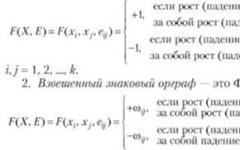Игра гулливеров, нетбол Словарь русских синонимов. баскетбол сущ., кол во синонимов: 8 баскет (1) игра … Словарь синонимов
Баскетбол - Баскетбол. БАСКЕТБОЛ (английское basket корзина и ball мяч), спортивная командная игра на площадке (26 м ´ 14 м) с мячом, который забрасывают руками в кольцо с сеткой (так называемую корзину), укрепленное на щите (на высоте 3,05 м).… … Иллюстрированный энциклопедический словарь
БАСКЕТБОЛ - (от англ. basket корзина и ball мяч), спортивная командная игра (см. Спорт), сущность которой заключается в том, что каждая команда стремится забросить наибольшее число раз кожаный мяч руками в корзинку без дна (диаметр 38 см), находящуюся на… … Большая медицинская энциклопедия
БАСКЕТБОЛ - (от англ. basket корзина и ball мяч) спортивная командная игра с мячом, который забрасывают руками в кольцо с сеткой (т. н. корзину), укрепленное на щите на высоте 3,05 м. Родина баскетбола США (1891). В Международной федерации баскетбола (FIBA;… … Большой Энциклопедический словарь
БАСКЕТБОЛ - БАСКЕТБОЛ, баскетбола, муж. (англ. basket ball, букв. корзиночный мяч) (спорт.). Род командной игры, в которой забрасывают мяч в корзину (особой формы обруч) противной партии. Толковый словарь Ушакова. Д.Н. Ушаков. 1935 1940 … Толковый словарь Ушакова
БАСКЕТБОЛ - БАСКЕТБОЛ, а, муж. Спортивная командная игра, в к рой игроки стараются руками забросить мяч в корзину (во 2 знач.), а также соответствующий вид спорта. | прил. баскетбольный, ая, ое. Толковый словарь Ожегова. С.И. Ожегов, Н.Ю. Шведова. 1949 1992 … Толковый словарь Ожегова
баскетболіст - іменник чоловічого роду, істота … Орфографічний словник української мови
Баскетбол - Баскетбольный мяч … Википедия
баскетбол - а; м. [англ. basket ball от basket корзина и ball мяч]. Командная спортивная игра, в которой мяч забрасывают руками в кольцо с сеткой (корзину) соперника, прикрепленное на определенной высоте; вид спорта. Играть в б. Увлекаться баскетболом.… … Энциклопедический словарь
баскетбол - Английское – basketball. Французское – basket ball. Немецкое – Basketball (баскетбол). Слово «баскетбол» и прилагательное «баскетбольный» известны в русском языке с начала XX в. В словарях – с 1926 г. Как и в других славянских языках, в русском… … Этимологический словарь русского языка Семенова
Книги
- Баскетбол , . Спортивная энциклопедия - это серия книг о спортивных играх, рассказывающая о правилах игр, порядке и особенностях их проведения, истории возникновения, о легендарных игроках и чемпионатах,… Купить за 227 руб
- Баскетбол , Марина и Сергей Дяченко. «…Счет был пять тысяч сто тридцать шесть на пять тысяч двести в пользу команды Мэла. Новичок Кирилл был очень хорош в игре, но слаб психологически. Всякий раз, когдав спину ему ударяла…
The History of basketball, a game that started with 18 men in a YMCA gymnasium in Springfield, Mass., has grown into a game that more than 300 million people play worldwide. The man who created this instantly successful sport was Dr. James Naismith.
Under orders from Dr. Luther Gulick, head of Physical Education at the School for Christian Workers. Naismith had 14 days to create an indoor game that would provide an "athletic distraction" for a rowdy class through the brutal New England winter.
Naismith"s invention didn"t come easily. Getting close to the deadline, he struggled to keep the class" faith. His first intention was to bring outdoor games indoors, i.e., soccer and lacrosse. These games proved too physical and cumbersome.
At his wits" end, Naismith recalled a childhood game that required players to use finesse and accuracy to become successful. After brainstorming this new idea, Naismith developed basketball"s original 13 rules and consequently, the game of basketball.
As basketball"s popularity grew, Naismith neither sought publicity nor engaged in self-promotion. He was first and foremost a physical educator who embraced recreational sport but shied away from the glory of competitive athletics.
Naismith was an intense student, collecting four degrees in the diverse fields of Philosophy, Religion, Physical Education and Medicine. Although he never had the opportunity to see the game become the astonishing spectacle it is today, Naismith"s biggest thrill came when he was sponsored by the National Association of Basketball Coaches (NABC) to witness basketball become an Olympic sport at the 1936 Games held in Berlin.
Naismith became famous for creating the game of basketball, a stroke of genius that never brought him fame or fortune during his lifetime, but enormous recognition following his passing in 1939.
For his historic invention, Naismith"s name adorns the world"s only Basketball Hall of Fame, a tribute that forever makes James Naismith synonymous with basketball.
Abner Doubleday, who didn"t invent baseball, is probably a more widely recognized name than Naismith, who did invent basketball. And even those who know about him continue to learn more about the man who invented a sport designed for offseason physical exercise, which began with his own 13 basic rules, but which has grown to become a game not for a specific culture or nation or ethnic group, but for an entire planet to share and enjoy.
Naismith is the only coach in University of Kansas men"s basketball history to own a losing record. Naismith was 55-60 from 1898 to 1907, which mattered little to him only in that one of his most famous quotes was that basketball was never meant to be coached, anyway, only to be played.
The new game was explained by 13 basic rules and was played with a soccer ball, peach baskets and nine to a side. There have been major changes to the game since that first contest, which is believed to have been played Dec. 21, 1891.
But perhaps what is most amazing about Naismith"s creation, other than the fact that few sports that are purposely invented actually stand the test of time, is that the essence of basketball-throwing a ball into an elevated goal-has remained the focus from day one.
Today, Naismith would be universally recognized as a genius, a Bill Gates of sport. And in all likelihood, the opportunity would exist for him to become a multi-millionaire.
But if Naismith was The Basketball Man, he was not The Money Man, and life in 1891 was far different than in 1991 or 2001.
But if Naismith"s invention did not lead to profit, it did lead to huge popularity for basketball. Even in the final years of the 19th century, with communication and transportation that was primitive by today"s standards, the game"s growth was palpable, immediate and widespread.
James Naismith had changed the face of sport, not so much for the 19th century, but the 20th, and it is now clear, the 21st. All in an effort to keep unruly students at bay.
The History of Basketball
I am going to tell you about one of the most popular games. It is basketball.
The game of basketball has evolved a great deal throughout the years. Basketball was invented on December 21,1891. The inventor of the game was a Canadian clergyman, James Naismith.
The game of basketball was fashioned from fragments of other games, seeking to eliminate flaws of rugby, soccer.
Basketball was first played in the United States. In fact, the first game was played at one training school, now called Springfield College.
Basketball is a simple game. The equipment used in the game is also very simple. In addition to the field itself, all that is needed for a game is a ball. The very first ball that was used was a soccer ball until 1894 when an actual «basketball» was invented. The basketball ball was slightly smaller, about 30 inches in diameter. The first baskets that were used, were two peach baskets hung from the balcony of the gymnasium.
In 1893, the backboard was invented. The first backboard was constructed out of wire mesh, then wood and now it is made out of glass so the backboard does not interfere with the viewing of the game. Around that time, there was no name for this game.
By 1906, the peach baskets were replaced by metal baskets with holes in the bottom. This was better than in the early days, when a ladder was used to climb and fetch the ball out of the basket. Finally, in 1913 a hoop with a net was invented. In my opinion, the invention of the hoop and net was a major step in the developing of the game of basketball. Due to the free falling ball, the game"s tempo increased, which allowed the game of basketball to develop even more.
In 1921, one man named the game «basketball» and it has been called basketball ever since.
In the very beginning Naismith introduced thirteen original rules for the game of basketball, in which 12 out of the 13 original rules were still used up to 1934. The only rule, which changed, was that a player was now allowed to dribble a basketball. The rule of dribbling the basketball was first used in 1896 at a basketball game at Yale University. With the introduction of the 13 original rules, Naismith created four fundamental principals, which stayed in the game from 1891to 1937. These four fundamental principals stated, players with the ball must not make progress, the goal is above the head of the players, roughness is eliminated and a player may not receive the ball by use of contact.
Through the years of 1891 to the 1940"s there were many rule changes as well as addition of rules to the game of basketball. By 1898, basketball leagues were starting to form in the United States. In 1898, professional basketball was being played. The league was called the National Basketball League (NBL). The National Basketball League was made up of four teams like New York, Philadelphia, Brooklyn and New Jersey.
By 1932 basketball was officially gaining international status with the founding of the International Amateur Basketball Federation in Geneva, Switzerland. In 1946, the Basketball Association of America was formed but it did not go far well because it was competing against the National Basketball League. But in 1949, the Basketball Association of America and the National Basketball League joined together.
They changed their name to the National Basketball Association (NBA). Throughout the formation of the league there were many rules that were added to the game of basketball In 1930"s, Kenny Sailor invented the jump shot. Also in the 1940"s, Bob Kurland used block- shots. In 1952 the foul lane was widened and the three-second rule was put into affect, so centres could not station themselves in front of the basket all the time. During the 1950"s the National Basketball Association was on the rise. During the 1970"s and 198G"s the expansion of the NBA had gone wild. In the mid 1980"s and early 1990"s Michael Jordan, who was one of the greatest players in NBA history, dominated the game and took it to a wholly new level.
At this time, basketball was increasing in popularity. Nowadays it is played by 176 nations.
История баскетбола
Я собираюсь рассказать вам об одной очень популярной игре. Это - баскетбол.
Игра баскетбол развивалась в течение многих лет. Баскетбол был изобретен 21 декабря 1891 года. Изобретателем игры был канадский священнослужитель Джеймс Найсмит.
Игра баскетбол была создана из фрагментов других игр, с целью устранения недостатков регби, футбола.
Впервые в баскетбол сыграли в Соединенных Штатах в одной из спортивных школ, которая теперь называется Спрингфилдский колледж.
Баскетбол - это простая игра. Снаряжение, используемое в баскетболе, также очень простое. В дополнение к самому полю все, что необходимо для игры, - это мяч. До 1894 года, когда и был изобретен баскетбольный мяч, в игре использовался футбольный мяч. Баскетбольный мяч был немного меньше, приблизительно 30 дюймов в диаметре. Первые корзины, которые использовались в то время, были размером с две корзины из под персиков, которые подвешивались на балкон гимнастического зала.
В1893 году был изобретен
баскетбольный щит. Первый баскетбольный щит был построен из
проволочной сетки,
позже - из дерева, а теперь он сделан из стекла, так что его
задняя часть не мешает смотреть игру. В то время для этой игры
не было никакого названия.
К 1906 году корзины из под персиков были заменены металлическими корзинами с отверстиями в основании. Это улучшило игру, тогда как раньше приходилось использовать лестницу, чтобы подняться и вынуть мяч из корзины. Наконец, в 1913 году был изобретен обруч с сеткой. По моему мнению, изобретение обруча и сетки было решающим шагом в развитии игры баскетбол. Из-за свободного выпадения мяча темп игры увеличился, что позволило баскетболу развиваться еще быстрее.
В1921 году один человек назвал игру «баскетболом», и с тех пор игра стала называться баскетболом.
В самом начале Нейсмит ввел 13 базовых правил для игры в баскетбол, двенадцать из которых так и использовались вплоть до 1934 года. Единственное правило, которое изменилось, состояло в том, что теперь игроку позволялось вести баскетбольный мяч. Правило ведения баскетбольного мяча впервые было использовано в 1896 году в Йельском университете. С введением 13 первоначальных правил, Нейсмит создал четыре фундаментальных принципа игры, которые использовались в игре с 1891 по 1937 год. Эти четыре фундаментальных принципа гласили, что игроки, остановившиеся с мячом, не должны двигаться дальше; цель находится выше голов игроков; грубость не применима и игрок не может получить мяч при помощи силового контакта.
С 1891 года до сороковых годов двадцатого столетия было сделано множество изменений в правилах, в игру были введены дополнительные правила. К 1898 году в Соединенных Штатах начали формироваться баскетбольные лиги. В1898 начали играть в профессиональный баскетбол. Лига получила название Национальной лиги баскетбола (NBL). Национальная лига баскетбола состояла из четырех команд: команды Нью-Йорка, Филадельфии, Бруклина и Нью-Джерси.
К1932 году, с основанием Международной любительской федерации баскетбола в Женеве, Швейцария; баскетбол официально получил международный статус. В1946 году была сформирована Американская ассоциация баскетбола, но из этого ничего хорошего не получилось, потому что она составляла конкуренцию Национальной лиге баскетбола. Но в 1949 году Американская ассоциация баскетбола и Национальная лига баскетбола объединились.
Они сменили свое название на Национальную ассоциацию баскетбола (NBA). За все время становления баскетбола в игру было добавлено много новых правил» В 1930-х годах Кении Сей лор изобрел бросок в прыжке; В 1940-х Боб Курланд использовал блок-шоты. В1952 году была расширена штрафная зона и введено правило трехсекундной зоны, так что центровые не могли находиться перед корзиной продолжительное время. В течение 1950-х годов Национальная ассоциация баскетбола процветала. В течение 1970-х и 1980-х расширение NBA стало неимоверно стремительным. В середине 1980-х и в начале 1990-х Майкл Джордан стал одним из величайших игроков в истории NBA, непревзойденным королем игры и поднял игру до совершенно другого уровня.
В это время популярность баскетбола
росла. В настоящее время в баскетбол играют 176 наций.
Questions:
1. When was the
game of basketball invented?
2. Where was the first game of basketball played?
3. What was the first basketball ball?
4. When was an actual «basketball» ball invented?
5. When were basketball hoop and net invented?
6. How many original rules were there in the game of basketball
when it was invented?
7. When was the first professional basketball match played?
8. When did the game of basketball officially gain its
international status?
9. How and when did the National Basketball Association appear?
10. Who invented the jump shot?
11. When was the three-point line introduced?
Vocabulary:
to evolve - эволюционировать,
развиваться
to invent - изобретать, создавать, придумывать
clergyman- священник
to fashion - зд. создавать, сформировать
to eliminate - устранять, исключать
flaw - перен. изъян, недостаток
rugby - регби (тж. Rugby football)
soccer - футбол (по правилам Национальной ассоциации футболистов
Великобритании)
basket - корзина
slightly - мало, незначительно, несущественно, немного, слегка
inch - дюйм (= 2,5 см)
peach - персик
to hang (past, hung, p.p. hung) - вешать, подвешивать
bottom - низ, нижняя часть
ladder - лестница
to climb - взбираться, влезать
to fetch - достать
hoop - кольцо, обод
net - сеть, сетка
to develop - развивать
due to - благодаря
tempo - ритм, темп
to increase - возрастать, увёличивать(ся); расти
backboard - баскетбольный щит
wire mesh - проволочная сетка
to interfere - служить препятствием, мешать,
to dribble - вести мяч
roughness - грубость
to gain - получать, приобретать; добиваться
amateur - любитель
Geneva - город Женева
Switzerland - Швейцария
to compete - соревноваться
to join - присоединиться, объединиться
jump shot - бросок мяча в прыжке
block- shot - блок-шот
foul lane - штрафная зона
to put into affect - зд. ввести в действие, задействовать
rise - повышение, подъем
expansion - распространение, экспансия; рост, развитие
History of Basketball
The game of basketball has evolved a great deal throughout the years. Basketball was invented on December 21, 1891. The inventor of the game was a Canadian clergyman, James Naismith (Joseph Morse, 1973).
The game of basketball was fashioned from fragments of other games, seeking to eliminate flaws of indoor rugby, soccer and lacrosse. Naismith also borrowed aspects from the children’s game "Duck-on-a-Rock," in which children tried to knock off a rock from a boulder by tossing smaller rocks from about 20 feet away (Lauren S. Bahr, 1995).
There has been no question that basketball was first played in the United States. In fact, the first game was played at the International Young Men’s Christian Association Training School, now called Springfield College. (Joseph Morse, 1973) Naismith invented basketball as an alternative to the calisthenics and marching his students practiced to keep fit in the winters (Lauren S. Bahr, 1995).
Basketball was a simple game, which consists of a ball and a basket. The very first ball that was used was a soccer ball until 1894 when an actual "basketball" was invented. The basketball was slightly smaller, about 30 inches in diameter (William D. Halsey, 1975). While, the first baskets that were used were two peach baskets that were hung from the balcony of the gymnasium (Frank G. Menke, 1970). By 1906, the peach baskets were replaced by metal baskets with holes in the bottom. These holes were placed in the basket so a long pole could be used to poke the basketball out of the basket. This was better then in the early days, when a ladder was used to climb and fetch the ball out of the basket. Finally, in 1913 a hoop with a net was invented so the basketball could fall freely to the ground (Lauren S. Bahr, 1995). In my opinion, the invention of the hoop and net was a major step in the game of basketball. Due to the free falling ball the game’s tempo increased which allowed the game of basketball to develop even more.
In 1893, due to the overzealous spectators interfering with the basketball, the backboard was invented. The first backboard was constructed out of wire mesh, then wood and now it is made out of glass so the backboard does not interfere with the viewing of the game (Lauren S. Bahr, 1995).
Around this time, there was no name for this game. Students wanted to call the game "Naismith Ball," but in did not take. In 1921, a man called Mahn named the game "basketball," and it has been called basketball ever since (Frank G. Menke, 1970).
As the game of basketball was developing, Naismith introduced the 13 original rules for the game of basketball in which 12 out of the 13 original rules were still used up to 1934 (William D. Halsey). The only rule, which changed, was that a player was now allowed to dribble a basketball (Lauren S. Bahr, 1995). The rule of dribbling the basketball was first used in 1896 at a basketball game at Yale University. But at that time, the dribbler could not shoot a field goal (Joseph Morse, 1973). This rule change had many advantages because it allowed for more movement, which caused greater excitement in the game of basketball. But along with many advantages there were also disadvantages as well. The main problem from the rule was that teams would dribble the ball for periods of time while they were leading the game. This was called "stalling," which accounted for many of the low scoring games in the early days of basketball (Frank G. Menke, 1970).
With the introduction of the 13 original rules, Naismith created four fundamental principals which stayed in the game from 1891to 1937. These four fundamental principals stated, players with the ball must not make progress, the goal is above the head of the players, roughness is eliminated and a player may not receive the ball by use of contact (Joseph Morse, 1973).
Through the years of 1891 to the 1940’s there were many rule changes as well as addition of rules to the game of basketball. In 1895, the free throw was introduced after a person was fouled. The problem with this rule at first was that a team had a "special shooter" to take the foul shots. It was not until 1923 that a player that had been fouled had to shoot the foul shots (Joseph Morse, 1973). In 1897, the number of players allowed on the court was reduced to five on each team. A team consisted of a center, two forwards and two guards. At the beginning, there were allowing six, seven and even eight player on each team (William D. Halsey, 1975). In 1908, the addition of the five foul rule was introduced into the game. It stated that a player who had exceeded the limit was not permitted to continue play of the game. One of the most important rules, which helped speed up the game, came in 1937. It was the elimination of the jump ball after any foul or stoppage in play. Since the standardization of rules in 1934, I believe that the game of basketball had changed for the best because it allowed for more speed and intensity.
By 1898, basketball leagues were starting to form in the United States. In 1898, professional basketball was being played. The league was called the National Basketball League (NBL). The National Basketball League was made up of four teams like New York, Philadelphia, Brooklyn and New Jersey (Lauren S. Bahr, 1995). The National Basketball League did not take hold until after World War II. Also, in 1898, the New England League was formed and they paid star players $150 to $200 a month. The New England League had a brief career and did not survive.
In 1925, the American Basketball League (ABL) which was the first real attempts to widen basketball to a worldwide sport (Lauren S. Bahr). The American Basketball League seasons were six months long and star players were paid $1500. The American Basketball was made up of a nine-team circuit.
By 1932 basketball was officially gaining international status with the founding of the International Amateur Basketball Federation in Geneva, Switzerland (Lauren S. Bahr, 1995).
At this time in 1927 basketball was drawing extraordinary popularity not only with the fans but also with its 20,000,000 players worldwide (Frank G. Menke, 1970).
The reason for this popularity at this time was because of the formation of the Harlem Globetrotters in 1927. The man that had created the team was Abe Saperstein. They were an all Negro team, which toured the world to promote basketball. There was no city too big or too small for the Globetrotters to play at. Throughout the years they attracted crowds of great capacity and shattered all time American attendance marks. In 1952, the attracted 35,548 and in 1953 they attracted 36,256 (Joseph Morse, 1973). I think the Harlem Globetrotters have changed the game of basketball because they realized that for basketball to grow you must entertain the fans. As everyone knows the Harlem Globetrotters are amazing athletes and they entertain people by their astonishing tricks and all around talent.
At this point basketball reached its present eminence in the United States through efforts of "Ned Irish," a top executive of Madison Square Gardens. In 1934, he persuaded the president of Madison Square Gardens to hold a double header game between Notre Dame and New York University. This was a success because it drew crowds of maximum capacity. But a little time after, between 1935 to 1936 the game of basketball was dimmed due to bribes within the game. College players were accepting bribes from gamblers to win games by less then the quoted point (William D. Halsey, 1975).
In 1946, the Basketball Association of America was formed but it did not far well because it was competing against the National Basketball League. But in 1949, the Basketball Association of America and the National Basketball League joined together.
They changed their name to the National Basketball Association (NBA). The first season of the National Basketball Association was in 1949 and it consisted of a 17-city circuit, which was divided up into three divisions. The schedule called for 550 games (Joseph Morse, 1973). By the second season the league was cut to 10 teams and two divisions.
The first team to win the National Basketball Association championship was Philadelphia. The first president of the league was Maurice Podolalf (Lauren S. Bahr, 1995).
Basketball is an extremely popular all around the world. The object is to put a ball through a hoop, or basket, and thus score more points than the opposing team. Teams comprise of ten players, with a maximum of five on court at any one time. Substitutions are unlimited during the course of the game.
Although basketball can be played outdoors, it was invented to serve as an exciting indoor exercise for the winter months in a northern climate. It quickly became a spectator sport, however, and now attracts large audiences to gymnasiums and arenas, especially in the United States, South America, and Europe.
The sport is played on the amateur level by schools, colleges, other groups, and, since 1936 by national teams in the Olympic Games. It also is played by professional athletes, notably in the United States and Europe. The foremost American championships contended for are those of the National Basketball Association (NBA) for professionals, the National Collegiate Athletic Association (NCAA) for colleges. Britain has National Associations for each country and the English Basketball Association (EBBA) runs amateur national competitions, the National Basketball League (NBL) is run by Basketball League Ltd for professionals. International competion is organised by the Federation of International Basketball (FIBA). It all started with two peach baskets in a YMCA in Massachusetts.
In 1891 James Naismith (1861-1939), a leader of the Springfield YMCA, was thinking about ways of providing exercise for the young men in his care. As a physical education instructor he taught gymnastics, however he was looking for something new. He had the idea of nailing peach baskets onto the balconies as goals, at either end of the gymnasium and throwing a soccer ball into it from below. So a National and International game was born.
In 1892 James Naismith published the first booklet containing the basic rules, almost unchanged today (although expanded upon considerably). These rules were adopted by the YMCA and the Amateur Athletic Union. Word spread quickly amongst YMCA"s in the Eastern United States about this new game. It took off so rapidly that the first intercollegiate game was played in 1897, and the first professional league in the following year.
The Eastern Intercollegiate League was formed shortly afterwards, in 1902. Women also took up the game before 1900. The growing popularity of basketball resulted in improvements in equipment and skills. The metal hoop was introduced in 1893, and backboards in 1895. The soccer ball was replaced by the first basketball. As playing skills also became more sophisticated, the game attracted more and more spectators.
Until the late 1930s, scores were low, sometimes in single digits. After each score, opposing centers (one of the five positions, the others being two guards and two forwards) lined up in the middle of the court and jumped for the ball. Then the team that got the ball would pass or dribble until a player was about 3 m (10 ft) from the basket before trying a shot.
The slow pace did not inhibit the growth of the game, however. By the 1920s, basketball was being played all over the United States, and tournaments were being conducted in high school and college gymnasiums. Most states held high school championships for boys.
Several events in the 1930s spurred the growth of the game as a spectator sport and at the same time made basketball more exciting for the players. The first of these came in the 1932-33 season (basketball seasons tend to run from Autumn through to Spring) rules designed to speed up play were adopted. It became mandatory, under penalty of losing possession, to move the ball past midcourt in less than ten seconds. In addition, no player was permitted to remain within the foul lanes for more than three seconds.
Then in 1934 a New York sportswriter, Ned Irish, persuaded the promoters at New York"s Madison Square Garden, a large arena, to schedule doubleheaders between college teams. These events proved successful, and similar promotions followed in other cities. Before long, colleges began building their own arenas for basketball.
Another significant advance occurred in 1936, when a Stanford University team traveled from California to a Madison Square Garden promotion to challenge the eastern powers in the "cradle of basketball". Opponents and fans were stunned by the Stanford style of shooting - one-handed while jumping, which contrasted to the prevalent method of taking two-handed shots while standing still. One Stanford player, Hank Luisetti, was so adept at the "jump shot" that he could outscore an entire opposing team. The new style gained universal acceptance, and basketball scores rose remarkably.
In the 1937-38 season the center jump following each field goal was eliminated. At the end of the next season, Madison Square Garden brought in college teams from around the nation for the National Invitation Tournament (NIT), a postseason playoff that was adopted (1939) on a wider scale by the National Collegiate Athletic Association (NCAA). Although the NIT is still held annually, the NCAA tournament serves as the official intercollegiate championship.
The University of Kentucky (coached, 1930-72, by Adolph Rupp), St. John"s (in New York), the University of North Carolina, Western Kentucky, Kansas University, and Indiana University have been among the leading college basketball teams for years. From 1964 to 1975 the University of California at Los Angeles (UCLA), coached by John Wooden and led by the centers Lew Alcindor and Bill Walton, dominated the intercollegiate play-offs, winning the title an unprecedented 10 times in 12 years.
The 1,250 college teams in the United States now draw about 30 million spectators per season. Although women have played the game since the 1890s, and even though a few states (Iowa, for instance) have shown great participatory and spectator interest in secondary-school women"s basketball for some decades, significant growth and serious recognition of women"s basketball in the United States and elsewhere did not occur until the 1970s.
Almost all U.S. states now hold girls" high school tournaments, and basketball is the fastest-growing women"s intercollegiate sport. From 1898 on, many attempts were made to establish professional basketball as a spectator sport - but success did not come until 1946. The best of the early efforts was made by the Harlem Globetrotters, an all-black team that toured first only the United States and then internationally to play local professional or semi-professional teams. The Globetrotters, founded in 1926, were not affiliated with a league. Their style was and is often showy because, at least into the early 1950s, they could dominate all opponents.
In 1946 serious professional basketball had acquired a following among American sports fans, who wanted to see the former collegians in action. That year the Basketball Association of America, with teams from the United States and one from Toronto, began competing in large arenas in the major cities. Another professional league, the National Basketball League, was already in existence, with many franchises in medium-sized midwestern cities. The two leagues merged in 1949 as the National Basketball Association (NBA) and pared away the weaker franchises.
With the signing of the country"s best collegians through what was called a player draft, the NBA could display both talent and balance. The NBA"s greatest spurt of growth occurred in the 1960s and "70s. Although the Boston Celtics, led by Bill Russel, Bob Cousy, and John Havlicek and coached by Red Auerbach, won 11 of 13 NBA titles beginning in 1957, fans also closely followed such stars as Philadelphia"s Wilt Chamberlain, Cincinnati"s Oscar Robertson, and Los Angeles"s Jerry West and Elgin Baylor.
The NBA of the 1970s and 1980s exhibited a welcome balance of power: from 1970 until 1988 no team won consecutive NBA titles, though the New York Knicks (with Willis Reed, Walt Frazier, and Bill Bradley) won twice; the Boston Celtics, 5 times (3 with Larry Bird); and the Los Angeles Lakers, 6 times (5 with Magic Johnson). In the 1970s the NBA expanded from 9 teams to 22. Some of the new franchises were acquired when the American Basketball Association (1968-76) merged with the NBA. Also, a Dallas franchise was added in 1980; Charlotte, Carolina, and Miami, in 1988; and Minnesota and Orlando, in 1989.
During the late 1970s and early 1980s several women"s professional leagues were begun; all of them failed financially. Women in the USA are currently under the WNBA. The NBA today enjoys a massive worldwide following, and European basketball is fast emerging to challenge the domination of the Americans.








